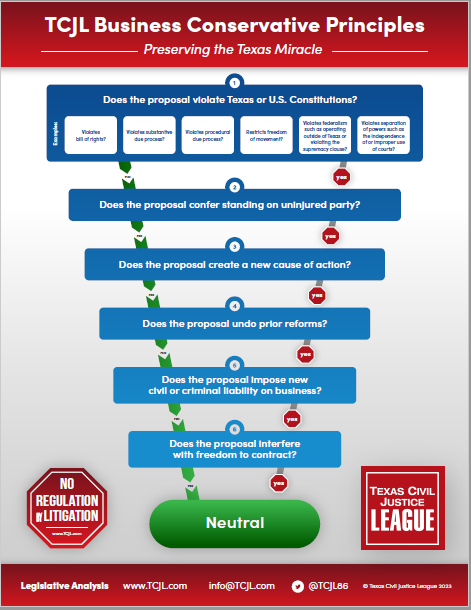 As we discussed earlier this week, the Senate Business & Commerce Committee is considering legislation mandating that private employers use the E-Verify program when hiring new employees. States with similar global mandates include Alabama, Arizona, Georgia, Mississippi, South Carolina, Tennessee, and Utah, though quite a few others, including Texas, require E-Verify. The largest economy in this group belongs to Georgia, which boasted a gross state product of $579.7 billion and about 4.9 million employees. Tennessee and Arizona come next, each with GSPs in the $350 billion range. The remaining states on the list lag far behind.
As we discussed earlier this week, the Senate Business & Commerce Committee is considering legislation mandating that private employers use the E-Verify program when hiring new employees. States with similar global mandates include Alabama, Arizona, Georgia, Mississippi, South Carolina, Tennessee, and Utah, though quite a few others, including Texas, require E-Verify. The largest economy in this group belongs to Georgia, which boasted a gross state product of $579.7 billion and about 4.9 million employees. Tennessee and Arizona come next, each with GSPs in the $350 billion range. The remaining states on the list lag far behind.
But if you add the economies of these states together, they don’t get within shouting distance of Texas. The ninth largest economy in the world, Texas churned out a GSP of $2.4 trillion from a workforce of about 14 million in 2022. Texas exports more products than California and New York combined and has the manufacturing, energy, and transport base to keep expanding well into the future. The point of taking this snapshot is to put a mandatory E-Verify requirement for Texas employers into a larger perspective. Stated simply, no state with anywhere close to an economy of the size, complexity, diversity, and dynamism of Texas has seen fit to compel its businesses to use what is well known to be a flawed and imperfect employee verification system.
One might ask why Texas needs such a mandate when there is scant evidence from the experience of a short list of much smaller states that it makes any difference. In fact, we have been unable to find any study showing that E-Verify has accomplished the objectives Congress had in mind when it established the program in 1997. In fact, a 2019 study by the Cato Institute found that E-Verify spotted only about 16% of “illegal workers” in 2018 and since 2006 has allowed about 12 million “illegal” hires to occur anyway. Cato also found that compliance rates in the states with mandates range from about 40% to 70%, hardly a ringing endorsement of the benefits of the program.
If the system worked better, there might be a better policy rationale for making employers use it. And although the Department of Homeland Security, which administers the program, proudly trumpets that the system is free and easy for employers to use, the reality is much different. While it is true that it doesn’t cost employers anything to enroll in the system, it is not true that using the system is free. When Congress considered a national E-Verify mandate in 2015, the Congressional Budget Office estimated that it would cost private sector employers $600 million in the first three years alone. An earlier analysis by Bloomberg, conducted in 2011, concluded that mandatory E-Verify could cost small businesses a staggering $2.6 billion and that small businesses that voluntarily used the program in 2010 incurred costs of upwards of $81 million for the privilege.
Proponents of mandatory E-Verify dispute these numbers, but even they admit that there are compliance costs for businesses associated with the program. Given the rate of employee turnover in the economy today, which the Bureau of Labor Statistics estimated to be about 57% in 2021, employers with workforces of any size at all find themselves in a continuous process of hiring new employees, onboarding them, training them, losing them to another employer, and then starting the process all over again. It bears keeping in mind that the E-Verify system is part of an enormous federal bureaucracy that requires employers who enroll to sign a lengthy memorandum of understanding with the federal government, complete mandatory training in the use of the system and regulatory compliance, update the employee information that is fed into the system, post various notices, and provide employees with forms and information, complete with penalties and the threat of legal action for noncompliance. We should also note that using E-Verify does not protect an employer from liability for hiring an undocumented worker who slips through the system, nor does it shield an employer from unwelcome visits from ICE or onerous and expensive audits. While all these aspects of E-Verify are necessary for the system to work in the first place, any representation that E-Verify is free and easy to use for employers should be taken with a large grain of salt.
Texas has become the envy of the nation for its business climate and quality of life. The Legislature has played a very significant role in making this possible. But imposing a costly and arguably ineffective regulatory scheme on Texas employers does not make the business climate better or accomplish anything other than to increase the cost of doing business, especially for smaller employers.












